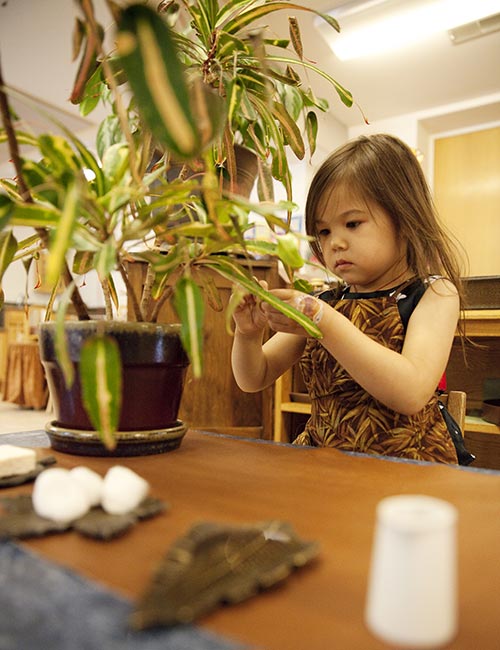Work and Concentration
Healthy adults are a diverse population, outstandingly different in our goals and intentions. The legendary psychologist Erik Erikson noted that most healthy people mature in predictable phases. He also pointed out that all healthy people have two things in common: we engage in constructive work and we invest in love.
Maria Montessori used different terms to describe the growth of children, but her message was essentially the same. She noticed that when they are offered time and space to work children respond with abundant joy. Like adults, children’s needs are quite simple. They need constructive work and consistent love. Montessori’s observations of children working with joy sparked a revolution in early childhood education. Children who are concentrating, she said, should be treated like royalty, cherished and protected.
The notion that healthy children can concentrate remains as countercultural today as it was 100 years ago. We suspect there are several ways in which concentration is more compromised today than it was for the children in the impoverished communities Montessori first observed. Television, Internet use, cell phones and iPods . . . the list is obvious and long. Distractions definitely abound and proliferate. Attention does often seem to be in a deficit and plummeting. Nonetheless, the ability to concentrate remains the hallmark of human health and lifelong learning.
Children who can concentrate grow up to be adults who succeed in corporate finance, household management, performance arts, and global politics
Purposeful Work
Maria Montessori believed that every child should have opportunities to select her work in her home and classroom, but the work she chooses is less significant than the experience that should follow. Her absorption should be complete and specific. Her attention should be fully directed to the task before her. A child’s concentration should be evident in her tireless repetition, her furrowed brow, and her ability to ignore the movement and noise that often surround her.
For the youngest child, concentration may begin with a button frame or a watering can. A toddler can become completely absorbed in setting the table. Older children scrub tables, sew burlap, read, calculate, weave and write, with a concentrated vigor that has nothing to do with rewards or punishments. An adolescent may become so engaged in the preparation of a community meal that time loses its meaning.
Maria Montessori noticed that when a child finished a task that had commanded his full attention for an extensive period of time, he was refreshed and invigorated. She expected her young student to be exhausted, but he was full of joy, renewed in his energies. Given uninterrupted time to concentrate on purposeful work, Montessori’s young students become self-motivated, peaceful students. Concentration is the best preparation for life, Montessori realized, far superior to any other goal in education. Tireless, joyful workers are our best citizens, the people who grow up to make significant contributions to the health of our planet.
Learning to Love
Children who can concentrate grow up to be adults who succeed in corporate finance, household management, performance arts, and global politics. Regardless of intelligence or talent, young adults who can concentrate are well prepared to synthesize information, create and contribute knowledge in fields that have not yet been imagined. Young people who can concentrate are also eager to engage in the ultimate human endeavor, demonstrating tireless love for a partner or a child, a neighbor or a stranger.
Concentration is a teacher’s word. Love is more spiritual, a deeply personal and private word. Loving is, though, a form of concentration. To love is to give our full attention to another person, over and over, with great joy. Maria Montessori believed that education should not be a preparation for school, but for life. She announced the secret of childhood because she knew children could concentrate. She believed in their capacity for constructive work. She also understood that it is through concentration that children learn how to work and love.



Leave a Comment